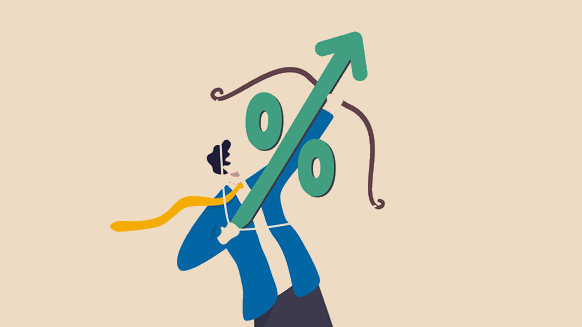For oil bulls, one of the biggest price caps this year is turning into a tailwind.
Oil’s 10% fall so far in 2023 confounded analysts’ and traders’ expectations of triple-digit prices as China reopened businesses after anti-Covid 19 measures.
Instead, one of the most aggressive rate tightening cycles by central banks in decades has created a perceived drag on demand, while encouraging traders to sell stored oil. This increased short-term supply in the market at a time when Russian and Iranian oil exports also increased.
But now, with the help of OPEC+ cuts and the same high borrowing costs, stocks are showing signs of starting to decline. With the rising cost of money helping to force barrels out of storage tanks, some bulls are now arguing that the market is nearing a tipping point, sending crude prices higher for lower peaks.
“Nobody wants to hold inventory, and I think as a world we’re heading toward lower inventory coverage,” Amrita Sen, co-founder and director of research at Energy Aspects, said in a Bloomberg TV interview last month. “If you ask me what I missed this year, it’s been the increase in the cost of capital and what that’s doing to the market, which is the decrease in inventory.”
The additional costs of storing oil during a period of sustained high interest rates are severe.
Take a load of two million barrels at prices of, say, $80 a barrel. Based on an interest rate of 5%, it would cost a merchant $8 million in financing per year to maintain shipping.
That effectively means it costs an extra 30 cents per barrel per month to maintain supplies. The disincentive to store is doubled when subsequent oil prices trade at a discount to the next — a structure known as backwardation, which is present now — because it means traders are forced to sell barrels they had stored at a loss.
Oil refiners, which buy crude and then sell fuels like gasoline and diesel at a later date, are also seeing their profits squeezed by higher financing costs.
It all serves to increase the chances that the world will have to get used to lower oil stock levels.
“Higher cost of capital encourages de-stocking,” Goldman Sachs Group Inc. analysts, including Callum Bruce, wrote in a recent note. “Destocking ends when inventories reach a new lower balance.”
The bank estimated that higher interest rates have pressured $8 a barrel over the next three years at key time intervals, effectively the shape of the futures curve. It is the largest such impact in decades, they added.
Draw Dawn
Bulls, whose optimism has been misplaced so far this year, argue that big oil releases are about to hit the market.
The International Energy Agency forecasts OPEC crude demand and inventories of more than 30 million barrels per day in the second half of the year.
That’s nearly 2 million barrels a day more than the group pumped last month. Meanwhile, the energy research arm of the US government is also forecasting a decline in inventories in the second half.
This fundamental optimism is having to contend simultaneously with some of the other, negative impacts of higher rates.
Since the first hike by the Federal Reserve, oil prices have come under persistent pressure. Minutes from the Fed’s June meeting showed a large majority of policymakers agreed that more tightening is likely to be needed this year.
On top of concerns that global energy consumption will suffer as economic growth slows, investors have flocked to assets that have higher returns and less perceived risk. A basket of 16 commodity ETFs is on track for its biggest annual outflow since at least 2006, according to data compiled by Bloomberg.
“Investors do not need to look for yield as aggressively as we see in a low interest rate environment,” said Warren Patterson, head of commodities strategy at ING Groep NV.
This week, OPEC+ leaders Saudi Arabia and Russia redoubled efforts to tighten the market, promising continued supply cuts next month. Alongside signs of falling inventories in the US, bulls argue that a period of market strength is on the horizon.
The question now is whether higher interest rates will strengthen this force by emptying storage tanks.
“There are higher maintenance costs, it’s kind of obvious,” said Gary Ross, a veteran oil consultant turned hedge fund manager at Black Gold Investors LLC. “You don’t want to build inventory with a limping Chinese economy and rising interest rates. We didn’t have a choice because supply was greater than demand, but now we’re stockpiling.”


